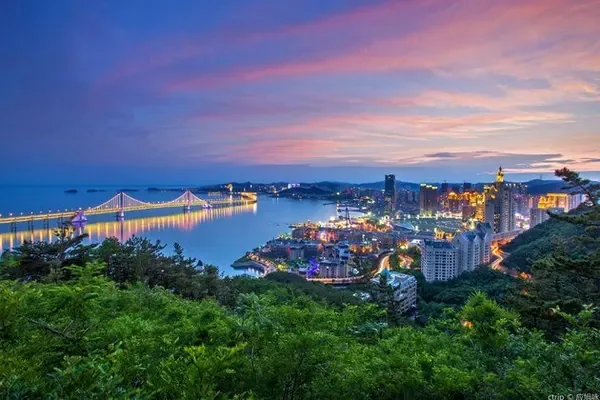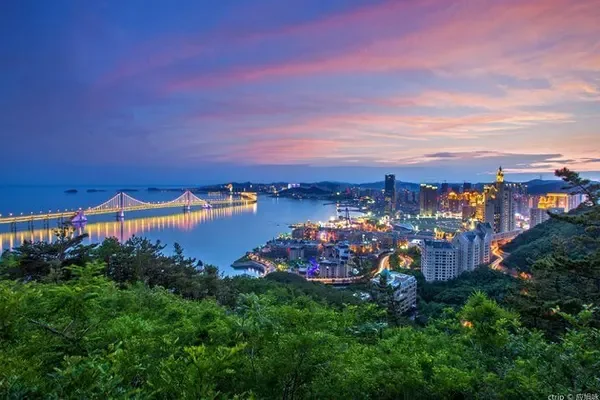↑Looking at the ancient rock paintings, you can taste the majestic Helan.

This kind of monolithic petroglyphs carved on a rock alone.

The scenic spot marks the petroglyphs on the stone with red dots, which is convenient for tourists to see.

[Human face] Among the rock paintings of Helan Mountain, there is a type of rock painting that accounts for more than half of the proportion, and that is the human face. The human face is composed of specific symbols, and these symbols represent male or female respectively. The human face is actually the primitive reproductive worship of the ancient ancestors. For example, a triangle represents a female, while a U or X in various directions represents a male. From the meanings of different symbols, it can be seen whether the painting is a feminist cult or a male cult.







[Animal portraits] The second type of petroglyphs in Helan Mountain is animal portraits. This petroglyph reflects the hunting situation of humans. If you look carefully, you will find that the large animals in the picture are all running to the right, while a small animal is running to the left. This means that in the era of painting, humans have domesticated dogs to help people hunt.

↑In this petroglyph, you can see deer, horse, cow, and thick, and there is a hand at the bottom. The hand here represents possession and possession.

↑
There is a square area in the upper left corner, and there are two sheep on the right, which shows that these two sheep are already captive animals.

↑The handprints in the Helan Mountain rock paintings on the picture have many meanings, such as possession in the above rock paintings. In this picture, there are two handprints, one large and one small. There is an animal below the small handprint. There is an ellipse like a lake on the upper left of the big handprint. Above the two handprints is an alien-like human face. The implication of this painting is that the tribes represented by the small mudra and the big mudra had conflicts over water sources. In the end, the small mudra tribe was defeated and had to sacrifice animals to the big mudra tribe, and all this was witnessed by the gods in the sky. Here the handprints of the two tribes represent a contract. Even today, human beings still have the habit of pressing their fingerprints when they sign a treaty.

Going east along the valley entrance, on the north side of the cliff, there is a rock painting marked with a red flag. This is the most famous sun god in the rock painting of Helan Mountain. After research, the Helios petroglyphs are the petroglyphs carved on the highest cliff in this group of petroglyphs, perhaps this represents the sun shining.

Walking forward on a rock, there is a rock painting, which dates from ancient times to the Xixia era.


↑Because the human face is very similar to the shaved and bald image of the Xixia people, the Xixia people saw the ancient human face and thought it was a depiction of their tribe by the gods, so they recreated on the basis of the original human face and engraved On the Western Xia script.
Helankou, the channel between the Alxa Plateau and the Hetao Plain, and the rock paintings of Helan Mountain are distributed on the cliffs on both sides of the alluvial fan of the estuary.

Helan Mountain Pass is frequently flooded in summer, and we can still see boulders washed down by the flood when we went there. A section of the petroglyphs in Helan Mountain has been washed away by floods.


The west side of here is the fence-like Helan Mountain, and the east side is a smooth estuary alluvial fan plain. Since ancient times, the Helan Mountain Pass has been the only way for nomads to enter the Central Plains, and it has also become a battleground for military strategists of all dynasties.



On the cliff, there are still records of guarding the frontier and defending against the enemy: Prime Minister Ningxia Zhencheng Guerrilla General and Hongguang Guerrilla General on the first day of May in the 30th year of Wanli. This is a stone carving of a town border general in the Ming Dynasty who came here to inspect.

On the north side of the cliff, looking up, you can also see the beacon tower of the Ming Dynasty.

Walk down the mountain to another location in the scenic spot, the Han Meilin Art Museum. The 60 yuan ticket has rock paintings and art galleries,



Yinchuan Han Meilin Art Museum

Yinchuan Han Meilin Art Museum

Yinchuan Han Meilin Art Museum



The rock paintings of Helan Mountain gave Han Meilin great inspiration for his artistic creation, so he chose the art museum here. It is said that "Monkey Sailei" was inspired by the rock paintings of the Sun God.









